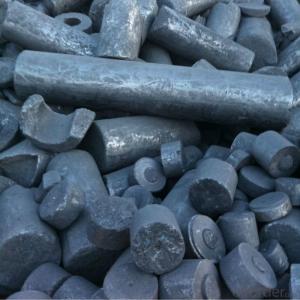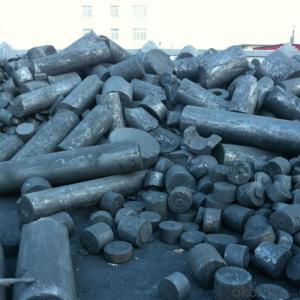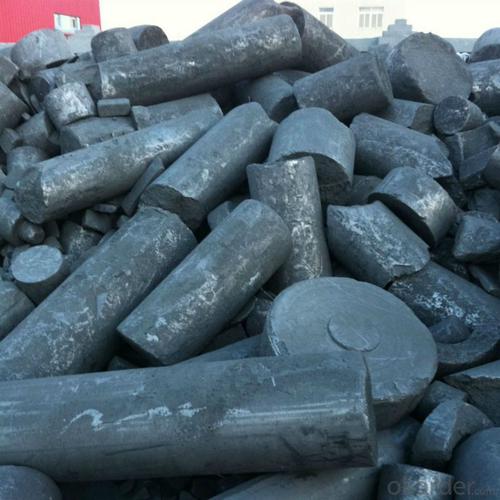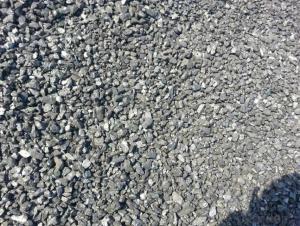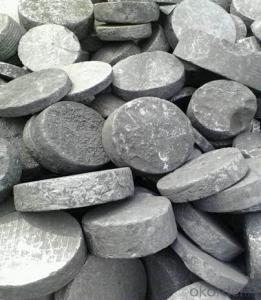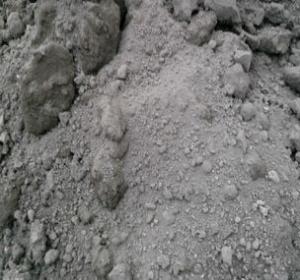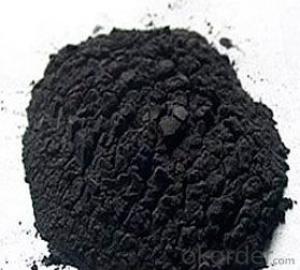Graphite Electrode Scrap high-purity as carburant and carbon additive
- Loading Port:
- Qingdao
- Payment Terms:
- TT OR LC
- Min Order Qty:
- 10 m.t
- Supply Capability:
- 5000000 m.t/month
OKorder Service Pledge
Quality Product, Order Online Tracking, Timely Delivery
OKorder Financial Service
Credit Rating, Credit Services, Credit Purchasing
You Might Also Like
Specifications:
F.C 98%min and 98.5%min, size: 100mm up
- Description & Application
Electrode block processing of carburant in steelmaking and casting, than ordinary recarburizer absorption rate is high, easy to melt, can efficiently improve the quality of products and reduce the cost.
- Technical Specification
F.C (min) |
| 98% |
S (max) |
| 0.05% |
ASH (max) |
| 1.00% |
Vm (max) |
| 1.00% |
H2O (max) |
| 0.50% |
SIZE |
| |
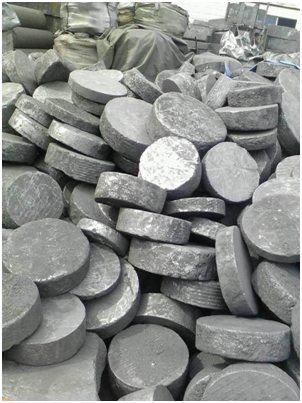
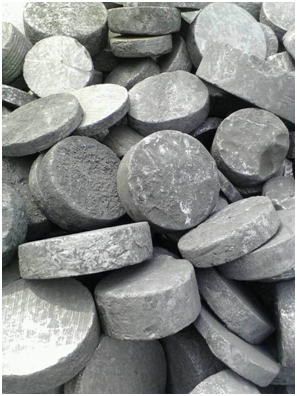
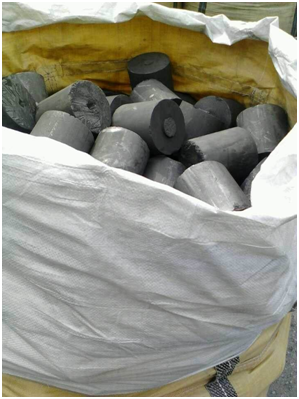

- Q: How do plants use carbon dioxide?
- Plants rely on photosynthesis, a crucial process for their survival, to utilize carbon dioxide. By means of small openings on their leaves called stomata, plants absorb carbon dioxide from the air. Inside the leaves, carbon dioxide reacts with water, obtained through root absorption, to generate glucose and oxygen. The plant utilizes glucose as an energy source for various metabolic activities and growth. Additionally, excess glucose is stored as starch for future requirements. Oxygen, on the other hand, is released into the atmosphere during photosynthesis, playing a vital role in the survival of countless organisms, including humans, who depend on it for respiration. Consequently, plants are indispensable for maintaining the equilibrium of carbon dioxide and oxygen in the atmosphere, making them vital for life on Earth.
- Q: What are the applications of carbon nanomaterials in medicine?
- Carbon nanomaterials have emerged as promising tools in the field of medicine due to their unique properties and potential applications. One of the key applications of carbon nanomaterials in medicine is in drug delivery systems. These nanomaterials can be functionalized with drugs, making them capable of targeted delivery to specific cells or tissues. The large surface area of carbon nanomaterials allows for more efficient drug loading, enabling improved therapeutic efficacy and reduced side effects. Carbon nanomaterials also show great potential in the field of tissue engineering. They can be used as scaffolds to support the growth and regeneration of damaged tissues. Carbon nanomaterials possess excellent mechanical strength and biocompatibility, making them suitable for applications such as bone and cartilage repair. Additionally, their electrical and thermal conductivity properties make them ideal for creating bioelectrodes and biosensors, which can be used for various diagnostic and monitoring purposes. Furthermore, carbon nanomaterials have been explored for their antimicrobial properties. They have shown the ability to inhibit the growth of bacteria and fungi, making them potential candidates for developing new antimicrobial agents. This could be particularly useful in preventing and treating infections in medical devices and implants. Another application of carbon nanomaterials in medicine is in imaging and diagnostics. These nanomaterials can be used as contrast agents in various imaging techniques, such as magnetic resonance imaging (MRI) and fluorescence imaging. Their unique optical and magnetic properties allow for enhanced imaging and improved detection of diseases, such as cancer. Carbon nanomaterials also hold promise in the field of cancer therapy. They can be used in photothermal therapy, where the nanomaterials are exposed to light, converting it into heat and selectively killing cancer cells. Additionally, carbon nanomaterials can be used in photodynamic therapy, where they generate reactive oxygen species upon light activation, leading to cancer cell destruction. In summary, carbon nanomaterials have a wide range of applications in medicine. They offer the potential for targeted drug delivery, tissue engineering, antimicrobial agents, diagnostic imaging, and cancer therapy. Continued research and development in this field hold great promise for revolutionizing medical treatments and improving patient outcomes.
- Q: Emerald garden high carbon tempered metal
- 2.1 businessmen in the lower right corner. After 2.2, on an island below. Go and eat the merchant and bring him home. Kill the dragon. Be sure to hurry. The merchant fell off (I don't recommend it). You can also put a red dragon below killed off 2 Dragon eggs. Called red dragon, the businessman to eat, then at home, do not ignore it, he died, a businessman has come out. Get around the enemy base!
- Q: How does deforestation contribute to carbon emissions?
- Deforestation contributes to carbon emissions by releasing large amounts of stored carbon dioxide (CO2) into the atmosphere. Trees act as carbon sinks, absorbing CO2 from the air during photosynthesis and storing it in their biomass. When forests are cleared or burned, this stored CO2 is released back into the atmosphere, adding to greenhouse gas levels and contributing to climate change.
- Q: What is the carbon footprint of different activities?
- The carbon footprint of different activities refers to the amount of greenhouse gas emissions, particularly carbon dioxide (CO2), that are released into the atmosphere as a result of carrying out those activities. It is a measure of the impact that these activities have on climate change. Various activities contribute to our carbon footprint, including transportation, energy use, food production, and waste management. The carbon footprint of each activity can vary significantly depending on factors such as the type of energy sources used, the efficiency of technologies involved, and individual choices. Transportation is a major contributor to carbon emissions, with cars, planes, and ships being the primary sources. The use of fossil fuels in these modes of transportation releases CO2 into the atmosphere. The type of vehicle, fuel efficiency, and distance traveled all play a role in determining the carbon footprint of transportation. Energy use is another significant contributor, particularly in the form of electricity generation. Burning fossil fuels like coal and natural gas to produce electricity releases CO2. However, renewable energy sources like wind, solar, and hydroelectric power have a lower carbon footprint as they do not emit greenhouse gases during operation. Food production is often overlooked but has a substantial carbon footprint. The agricultural practices involved in growing, processing, packaging, and transporting food contribute to emissions. Additionally, livestock farming, particularly beef and lamb, produces significant amounts of methane, a potent greenhouse gas. Waste management also contributes to carbon emissions, primarily through the decomposition of organic waste in landfills. As organic waste breaks down, it produces methane. Proper waste management techniques, such as composting and anaerobic digestion, can help reduce these emissions. It is important to note that the carbon footprint of activities can be reduced through various measures. Adopting energy-efficient technologies, using public transportation or carpooling, choosing renewable energy sources, eating a more sustainable diet, and practicing proper waste management are all ways to minimize our carbon footprint. Understanding the carbon footprint of different activities allows individuals, businesses, and governments to make informed decisions and take necessary actions to mitigate climate change. By reducing our carbon footprint, we can contribute to a more sustainable and environmentally-friendly future.
- Q: What is the atomic weight of carbon?
- The atomic weight of carbon is approximately 12 atomic mass units.
- Q: Carbon fiber refractory?
- Carbon fiber carbonization points: 1, graphitized carbon fiber cloth, can withstand 2000--3000 degrees of high temperature;
- Q: What do you mean by carbon fiber for 1K, 3K, 6K and 12K?
- Upstairs copy so much, people watching tired not tired.1K, 3K, 6K, 12K refers to the carbon fiber yarn containing the number of filaments, K is unit (thousand), 1K is 1000 followed, 3K is 3000, and so on, and so on!
- Q: How does carbon dioxide affect the pH of seawater?
- Carbon dioxide affects the pH of seawater by causing it to become more acidic. When carbon dioxide dissolves in seawater, it reacts with water molecules to form carbonic acid. This carbonic acid then dissociates into hydrogen ions (H+) and bicarbonate ions (HCO3-), which increases the concentration of hydrogen ions in the water. The increase in hydrogen ions leads to a decrease in pH, making the seawater more acidic. This process is called ocean acidification. Ocean acidification can have detrimental effects on marine organisms, such as coral reefs, shellfish, and other marine life that depend on calcium carbonate for their shells or skeletons. It can also disrupt the balance of marine ecosystems and impact various ecological processes in the ocean.
- Q: What are the main factors that affect the strength of carbon fibers?
- [Abstract]: the interface play on the properties of carbon fiber composite material plays a very important role, the composite load transfer through the interface, can make the carbon fiber and the matrix to form an effective performance of the whole. In the study of the interface, improving the bonding strength is the key to improve the mechanical properties of the carbon fiber composite. Therefore, it is very important to analyze the influence of various factors on the interfacial bonding strength of carbon fiber reinforced composites for improving the comprehensive properties of composites. In this paper, by using scanning electron microscopy (SEM), X ray photoelectron spectroscopy (XPS), laser Raman spectroscopy (LRS), X ray diffraction (XRD) and Fu Liye transform infrared spectroscopy (FTIR) and mechanical testing technology, investigated the effect of different preparation processes on the structure and properties of carbon fiber, discusses the evolution of the structure and properties of the carbon fiber surface process and electrochemical treatment in the process of electrochemical modification prepared by wet spinning PAN based carbon fiber, the carbon fiber surface except the rationality of glue craft, in-depth study of the carbon fiber electrochemical treatment, sizing agent and matrix modification effect on the bonding strength of carbon fiber composite the carbon fiber material, electrochemical modification mechanism and matrix modification mechanism.
Send your message to us
Graphite Electrode Scrap high-purity as carburant and carbon additive
- Loading Port:
- Qingdao
- Payment Terms:
- TT OR LC
- Min Order Qty:
- 10 m.t
- Supply Capability:
- 5000000 m.t/month
OKorder Service Pledge
Quality Product, Order Online Tracking, Timely Delivery
OKorder Financial Service
Credit Rating, Credit Services, Credit Purchasing
Similar products
Hot products
Hot Searches
Related keywords

